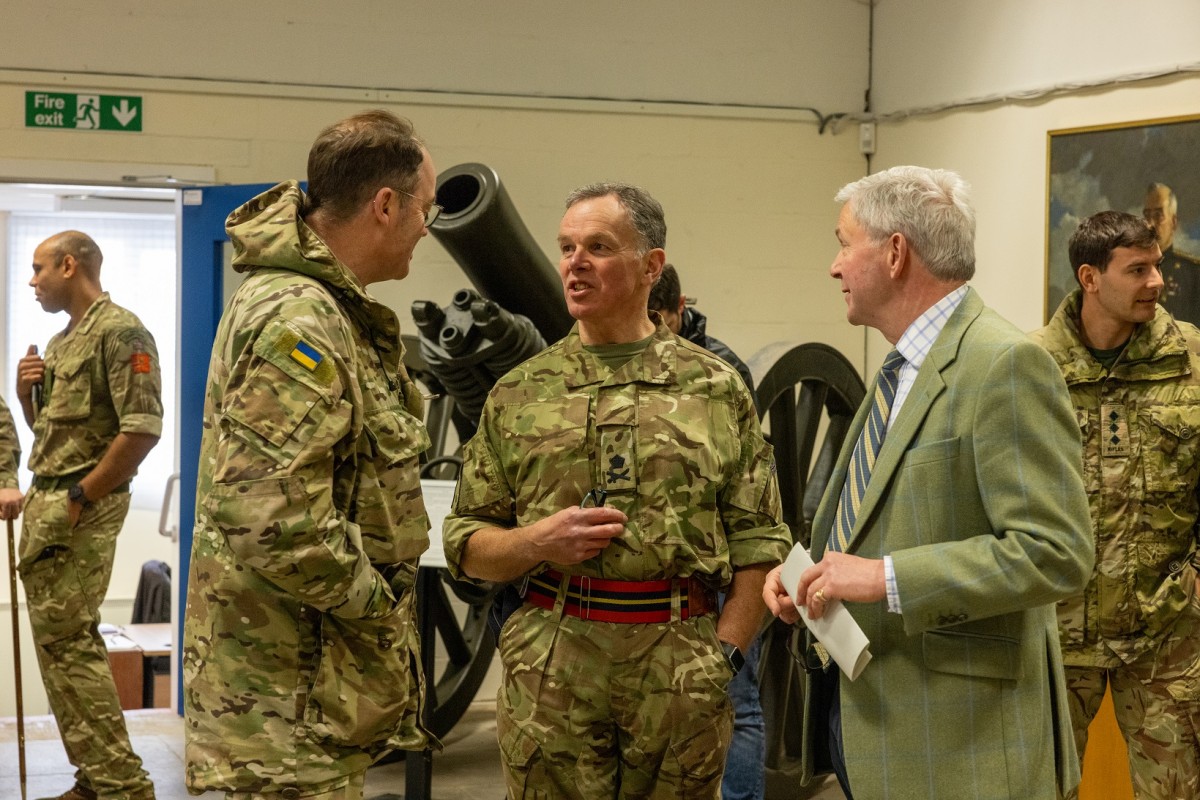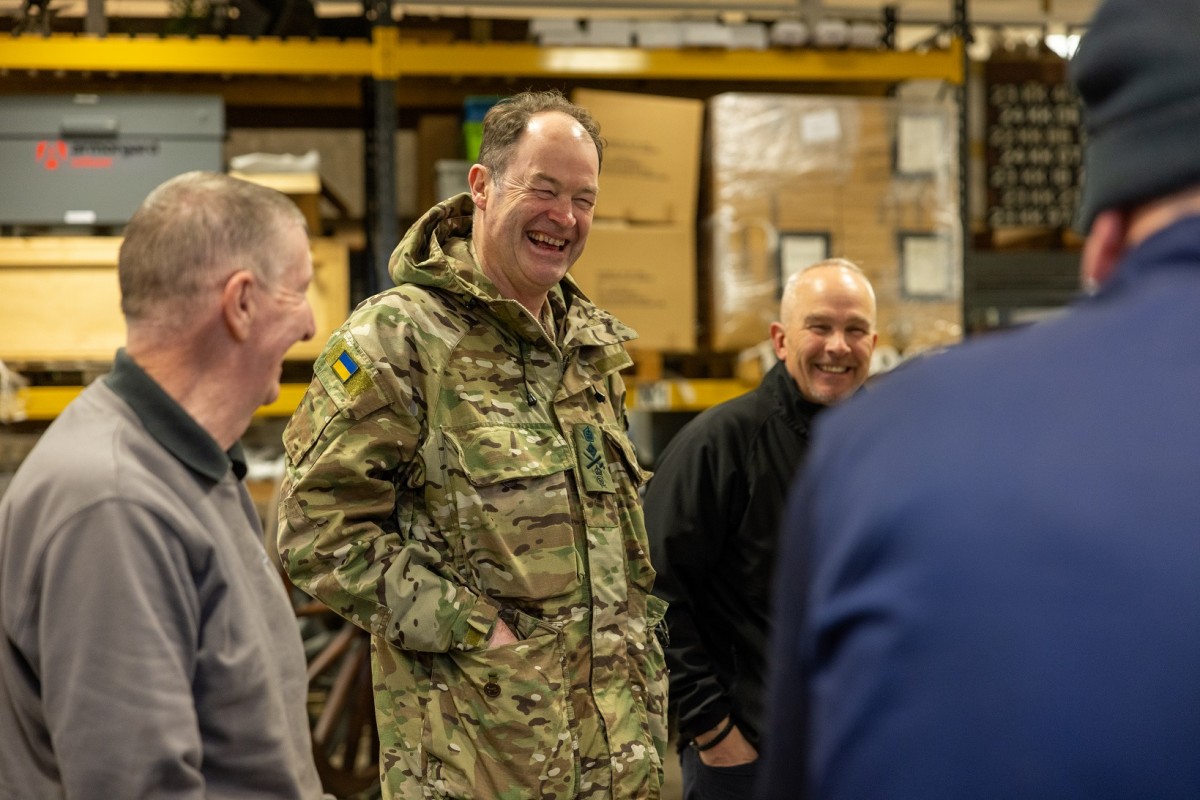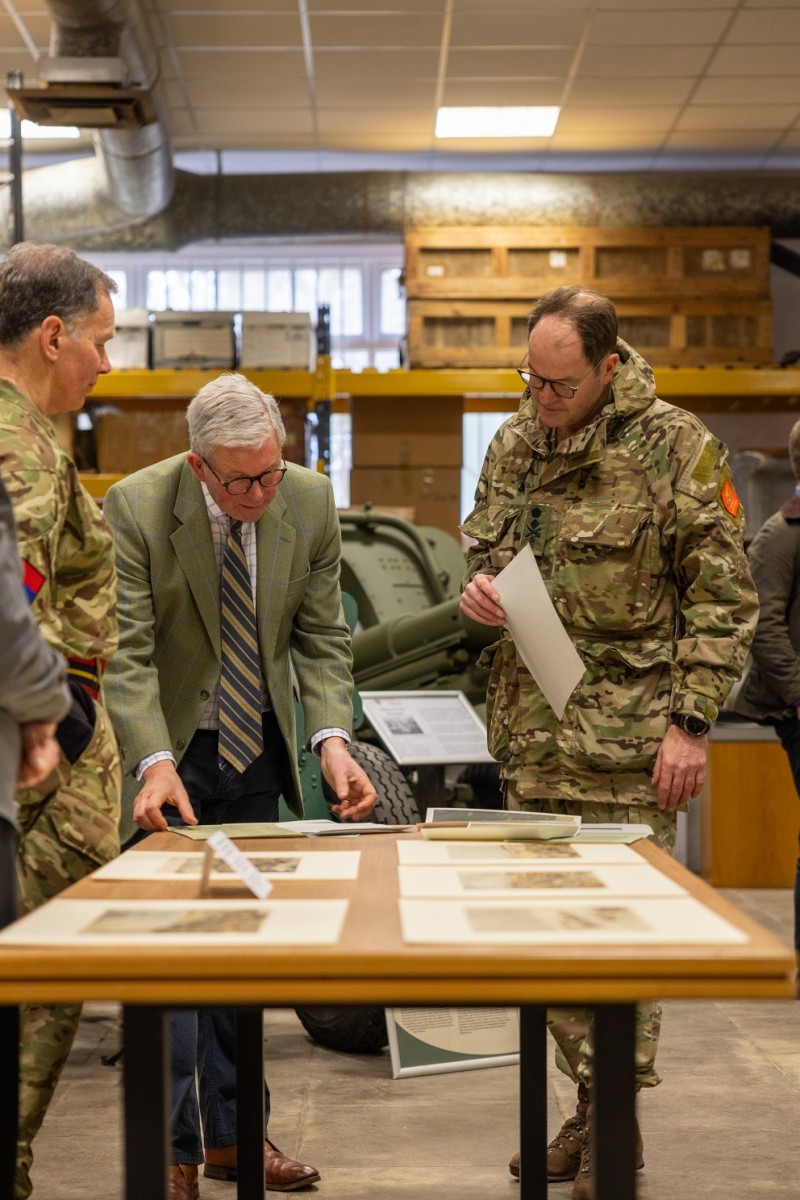Today marked a significant step towards the creation of a new Royal Artillery Museum, with the Army confirming its commitment to the development on a site at Larkhill.
General Sir Patrick Sanders, the Chief of the General Staff, was at Wood Road, Larkhill, to sign an agreement with Lieutenant General Sir Andrew Gregory, the Master Gunner St James’s Park, expressing their shared commitment to the project.
General Sanders, who has occupied the role as head of the British Army since 2022, emphasised the importance of delivering a new home for the Royal Artillery’s nationally important museum collection, stating that:
“The Army is committed to the new Royal Artillery Museum on a site east of Larkhill Camp. The museum holds one of the oldest and most significant of Army collections and it is quite right that it is returned to public display.”
General Gregory, who as Master Gunner is the link between the Regiment and its Captain General, King Charles, explained why he believed that Larkhill was the right location for the museum:
“The museum was established in 1778 as a teaching collection located at the heart of the Royal Artillery, which was at that time Woolwich. Over the last century, we have progressively moved out of London, and today Larkhill is very much the home of the Gunners. To revitalize that close link with the serving Regiment, we need the new museum to be located as close as possible to our centre of activity.”
With improved facilities and more extensive displays, the museum will build on the positive relationship it has already developed with the serving Regiment. Since moving into its current interim facilities at Wood Road two years ago, the museum has welcomed visits from a range of personnel in training at the nearby Royal School of Artillery, as well as groups from many of the Royal Artillery’s regiments and batteries. The aim is for the new museum to support further learning and research into the development and use of artillery, at the same time as harnessing the power of heritage to enhance Regimental identity and esprit-de-corps.
General Sanders gave a powerful statement on this subject:
"Heritage is incredibly important to the British Army. It reminds us of where we came from and informs the direction in which we go in the future. It underpins our sense of who we are and it inspires us with stories of the courage and selfless commitment of our predecessors.”
While serving personnel will be an important audience for the new museum, the collection will also be much more accessible to the wider public. For over three centuries the Royal Artillery has played a huge part in the story of our nation, and the museum will be designed to appeal to anyone with an interest in military, social or international history, or in the development of technology, industry and innovation.
It is also hoped that the museum will become a genuine community hub, bringing together local residents, Army veterans and both military and civilian families, whether that is for special events and activities, or just for the café and children’s play area (which will be free to use without a museum ticket). It will also expand on its existing provision for local schools, youth groups such as Scouts and community groups like history societies and the Royal British Legion, all of whom have recently enjoyed tours of the collection at Wood Road.
Opportunities for volunteering and participation are another important part of the offer, and once again the groundwork is already well underway at Wood Road. The highly committed team of volunteers comprises a diverse mix of military veterans and local civilians, who provide invaluable assistance across every aspect of the museum’s work, from research and cataloguing to hosting guided tours and working on conservation and restoration projects.
The two generals visiting today saw some of those projects, and met staff and volunteers, when they were given a tour of Wood Road. They also had a chance to view some of the historical artefacts, including an exhibition of field guns dating from the 1600s through to WW2. Many smaller items were also on display, including artworks, medals and a number of objects associated with some of the most famous Gunners of the twentieth century.
General Sanders found the latter to be of particular interest:
“It is fascinating to view items relating to two of my predecessors as Chief of the General Staff, Field Marshall Ironside and Field Marshall Alanbrooke, who held the post at the beginning and end of WW2 respectively. Their stories remind us that the reason we serve is ultimately to protect the nation from those who would threaten our society and our way of life."
With today’s agreement, we are now one step closer to having a new place to tell those stories and the countless other stories embodied in the Royal Artillery’s remarkable museum collection. The next step is to start design work, with the aim of submitting a planning application to Wiltshire Council next year. Allowing for the construction and fit-out of the new building, it is hoped that it will be ready to open its doors to the public in less than five years.



